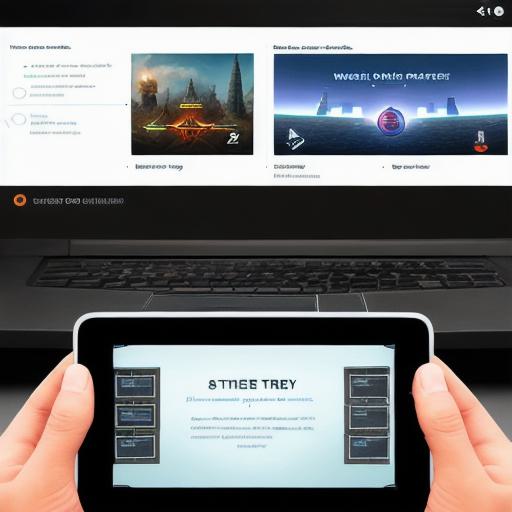How do software developers create games

Introduction:
Game development has become an increasingly popular field among software developers, as it offers a unique opportunity to combine creativity and technology in a way that captures the imagination of millions of people around the world. However, creating a successful game requires more than just a few coding skills – it’s an art form that demands a deep understanding of design, storytelling, and player psychology. In this article, we’ll explore the various stages involved in creating games and provide some insights into how software developers can create engaging and immersive gaming experiences.
Ideation: The First Step in Game Development
The first step in game development is ideation – brainstorming ideas for a game that will capture the imagination of players. While this may seem like a fun and creative process, it’s actually one of the most challenging stages of game development. In order to create a successful game, developers need to come up with an idea that resonates with their target audience and has the potential to become a cultural phenomenon.
One effective way for software developers to ideate is to draw inspiration from real-life experiences and situations. For example, a developer might draw upon their own personal experiences to create a game that explores themes like friendship, betrayal, or redemption. Alternatively, they could draw inspiration from current events or popular culture to create a game that addresses important social issues or captures the zeitgeist of the moment.
Once developers have a basic idea for their game, they can begin fleshing it out by creating a concept document – a detailed outline of the game’s story, characters, mechanics, and world. This document serves as a roadmap for the rest of the development process and helps to ensure that everyone involved in the project is on the same page.
Design: Bringing the Idea to Life
Once developers have a solid concept, they can move on to the design phase of game development. This involves creating the game’s visual and auditory elements, as well as defining its rules and mechanics.
In order to create an engaging game world, developers need to have a deep understanding of player psychology and what motivates players to keep playing. They also need to pay close attention to detail and ensure that every element of the game – from the characters to the environment – is consistent with the overall theme and story.
One effective way for software developers to design games is by using prototyping tools, which allow them to create interactive mockups of their game ideas and test them with real players. This can help them identify any potential issues early on in the development process and make adjustments as needed to ensure that the final product is engaging and fun.
Development: Turning the Design into Reality
Once the design phase is complete, developers can move on to the development phase of game creation. This involves writing code, creating assets, and implementing features based on the concept and design documents created earlier in the process.
One of the most important aspects of game development is testing – ensuring that the game works as intended and providing a smooth and enjoyable playing experience for players. Developers need to be meticulous in their testing processes, identifying and fixing any bugs or issues that could impact the player’s experience.
Another crucial aspect of game development is optimization – making sure that the game runs smoothly and efficiently on a variety of platforms and devices. This requires developers to have a deep understanding of computer science principles and to be able to optimize their code for maximum performance.

Launch and Post-Launch Support: Keeping Players Engaged

Once the game has been developed and tested, it’s time for the launch phase – making the game available to players. In order to ensure that the game is successful, developers need to have a solid marketing plan in place – promoting the game through social media, advertising, and other channels to reach their target audience.